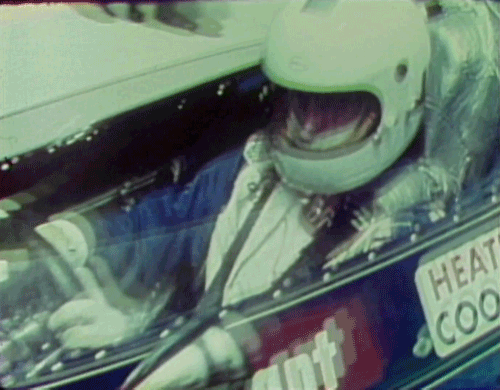

WHERE TRADITION NEVER STOPS


WILLY T. RIBBS–30 YEARS


As the saying goes, “Shoot for the moon. Even if you miss, you’ll land among the stars.” Janet Guthrie shot for the moon at the Indianapolis Motor Speedway in the 1970s, and instead of landing among the stars, she became one as she pioneered a path for women in motorsports by becoming the first female to race in the Indianapolis 500.

– JANET GUTHRIE
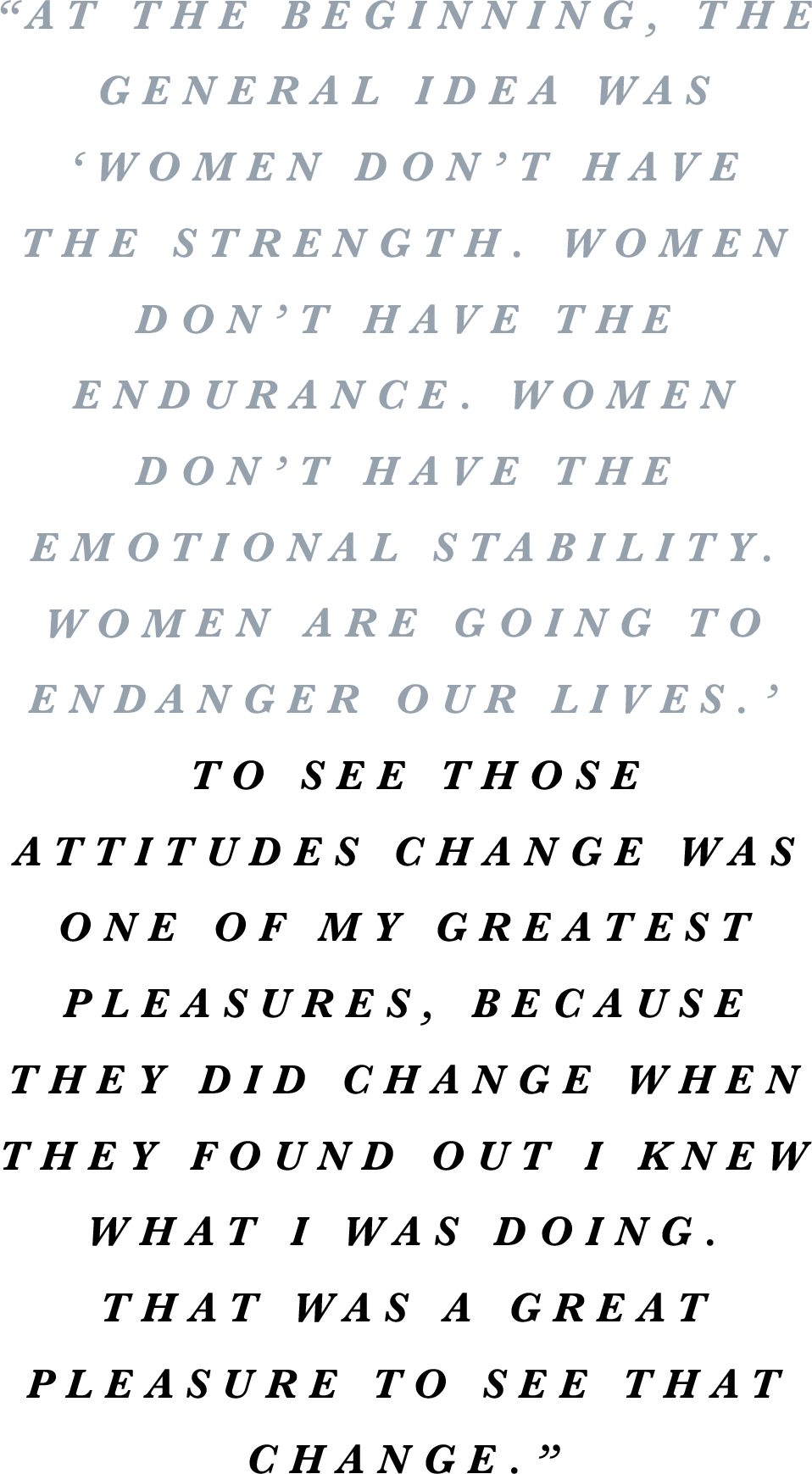

Vollstedt brought Guthrie to Indianapolis 45 years ago this May, making history as the first woman to enter the Indianapolis 500. This feat in 1976 came just five years after women were granted access to Gasoline Alley and pit lane in 1971.
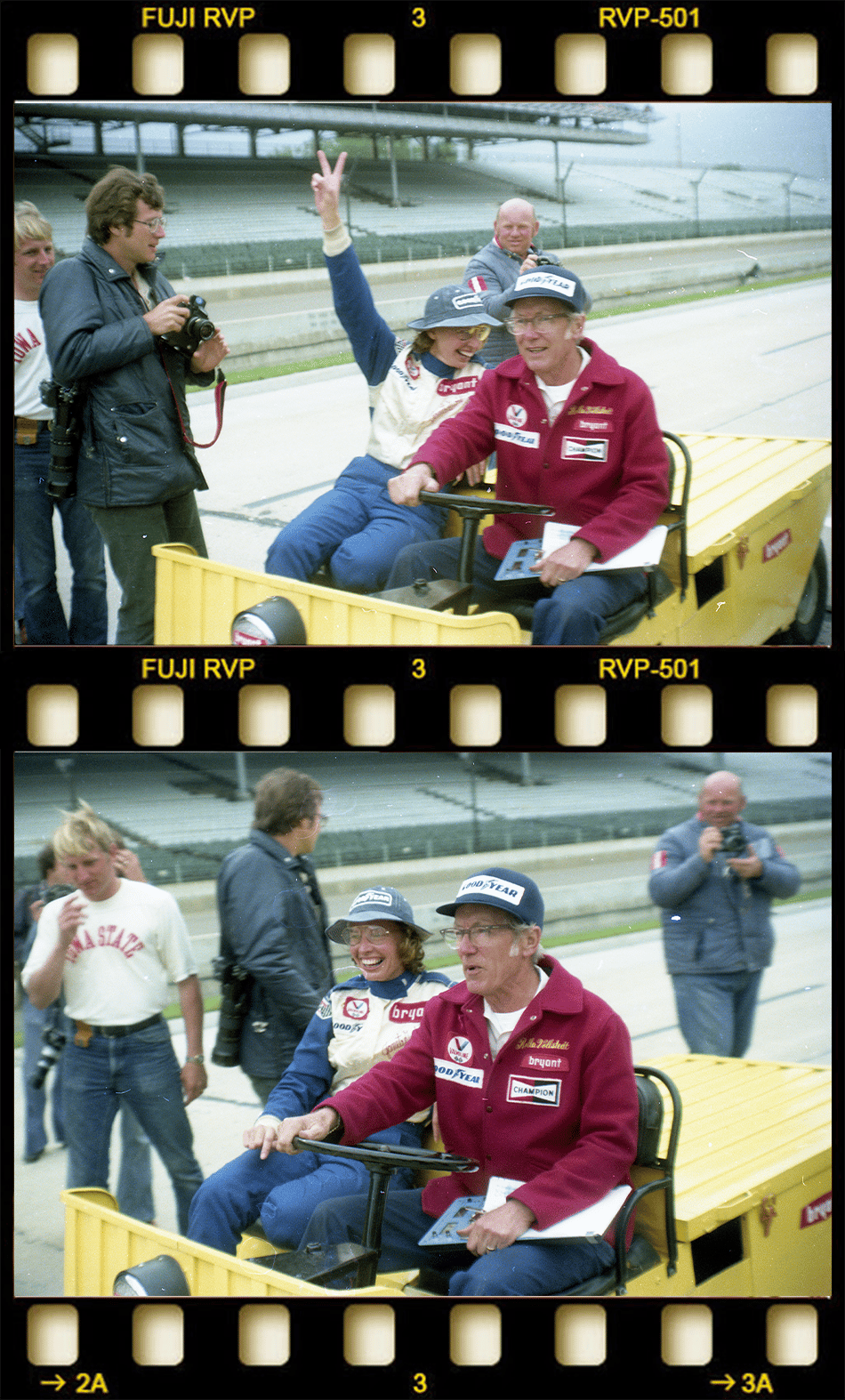
In 1960, Guthrie got her physics degree from the University of Michigan and started working as an aerospace engineer. She even applied to be a NASA astronaut in 1964. Unfortunately for Guthrie but fortunately for the motorsports industry, outer space was not in the cards for this racing pioneer.
Guthrie’s introduction to auto racing happened because the clogged airspace of New York City didn’t allow her to purchase an old World War II airplane in which to perform aerobatic tricks. Instead, she purchased a Jaguar XK120, and the rest is history.
Guthrie started competing in the Sports Car Club of America (SCCA), which turned into class victories at the 12 Hours of Sebring and her becoming the first woman to start a NASCAR race. As the 1970s rolled around, Guthrie was turning heads, in particular the head of USAC and Indy 500 car owner Rolla Vollstedt.
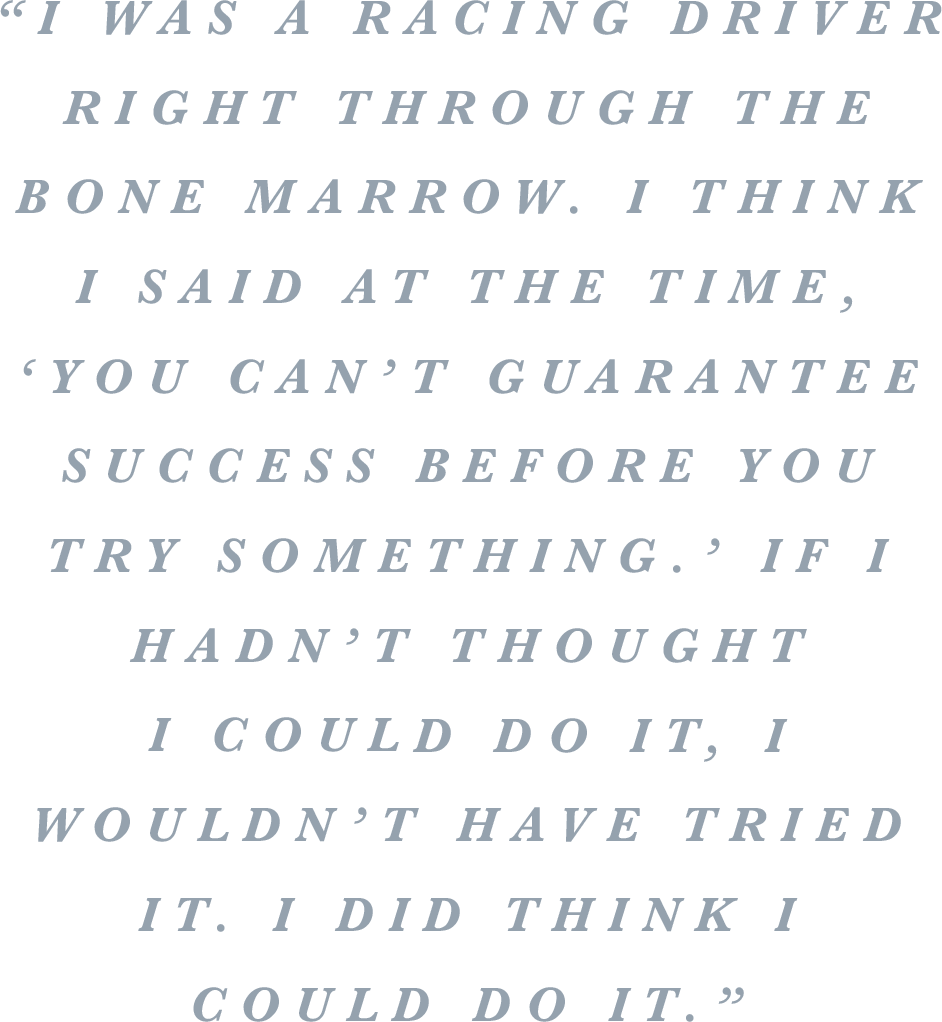
– JANET GUTHRIE

Unfortunately, she got off to a rocky start. Mechanical issues plagued her first few days at the Racing Capital of the World, and Guthrie didn’t see track time until Friday, May 10 when she became the first woman ever to drive official laps around the legendary Speedway in Vollstedt’s No. 27 Bryant Heating & Cooling machine.
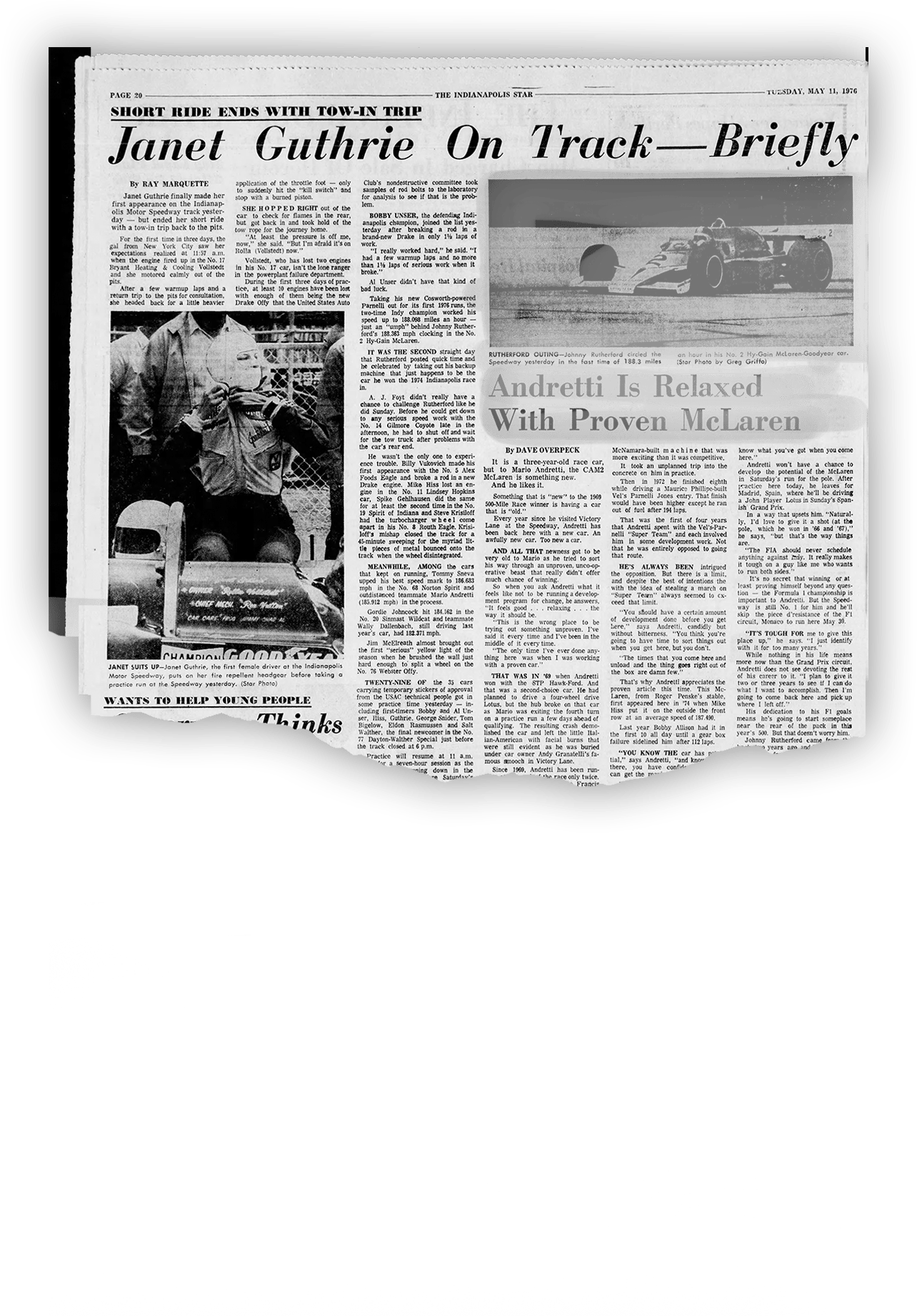
From issues firing the car up on the first day to an oil leak and a turbocharger fire, Guthrie’s car struggled to stay together all month long.
But she persisted, and she completed the first phase of the Rookie Orientation Program on May 11 and completed the second and final phase on May 17 “in an amazingly smooth and consistent run that brought instant approval from a ‘jury’ of four veteran USAC drivers,” the Indy 500 Daily Trackside Report noted.

– JANET GUTHRIE
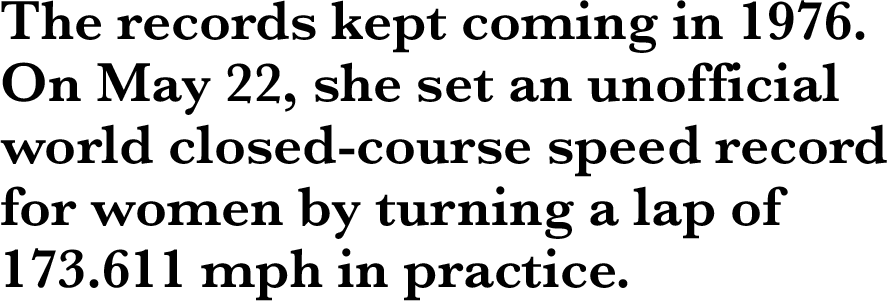
However, mechanical issues continued to plague the team, and the speed wasn’t there. Eventually, it became clear that her car did not have a path to make the race. Vollstedt was determined not to let Guthrie’s first attempt at Indianapolis result in nothing, so he began looking for another team that would put Guthrie in their car.
Vollstedt, a renowned car owner himself, landed on another well-known owner and already legendary driver at the Speedway: A.J. Foyt.



Foyt, who was a year away from becoming the first driver to win the Indianapolis 500 for a fourth time, offered his backup car to Guthrie to make laps in during the morning practice session on the final day of qualifications on May 23.

In a “go big or go home” moment that would prove whether Guthrie could hang with the best while driving the best, she turned her fastest laps of the month in the No. 1 Gilmore/Coyote, rocketing to second on the day’s speed chart.
Guthrie proved that in the right car she was qualified. While that was all she wrote in 1976, her history book was just beginning.
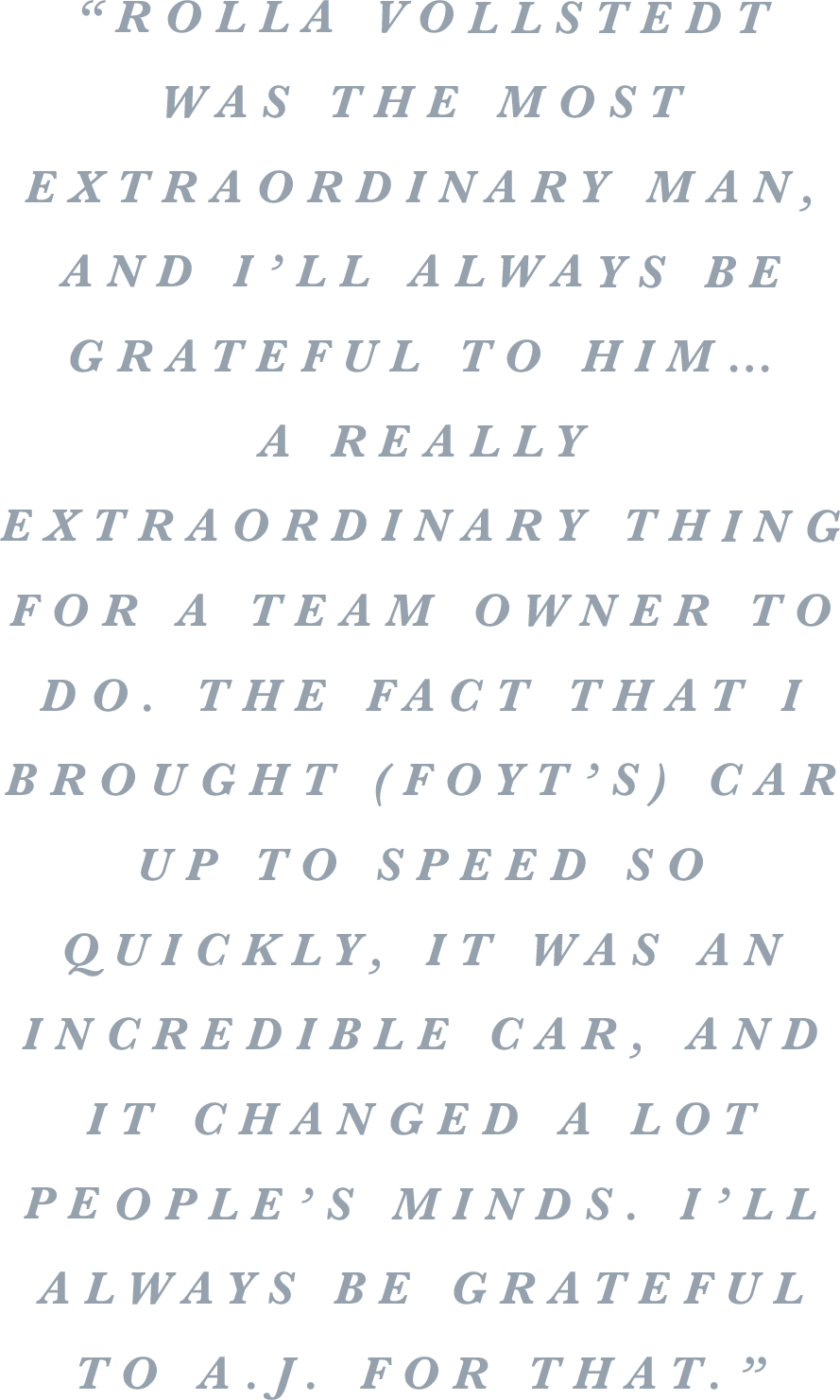
– JANET GUTHRIE

Guthrie returned to Indianapolis with Vollstedt in 1977, and she immediately splashed onto the scene in a big way.
Nevertheless, Guthrie powered forward, determined not to let Indianapolis’ daunting walls scare her away. Guthrie missed the first weekend of qualifying because of the accident, but she and the team repaired the car in time for another round of qualifications the following weekend.
On the last day of qualifying, Guthrie was the first driver to make an attempt, at 12:03 p.m. With an average speed of 188.403 mph, she became the first woman to qualify for the Indianapolis 500, slotting in the 26th position. Her speed was the 18th-fastest qualifying speed overall and the fastest of the entire final weekend.

Guthrie, now 39, rocketed to the top of the Scoring Pylon on the opening day of Indy 500 practice on May 7 with a top speed of 185.607 mph. She was 3 mph faster than the second-fastest speed of the day set by Danny Ongais.

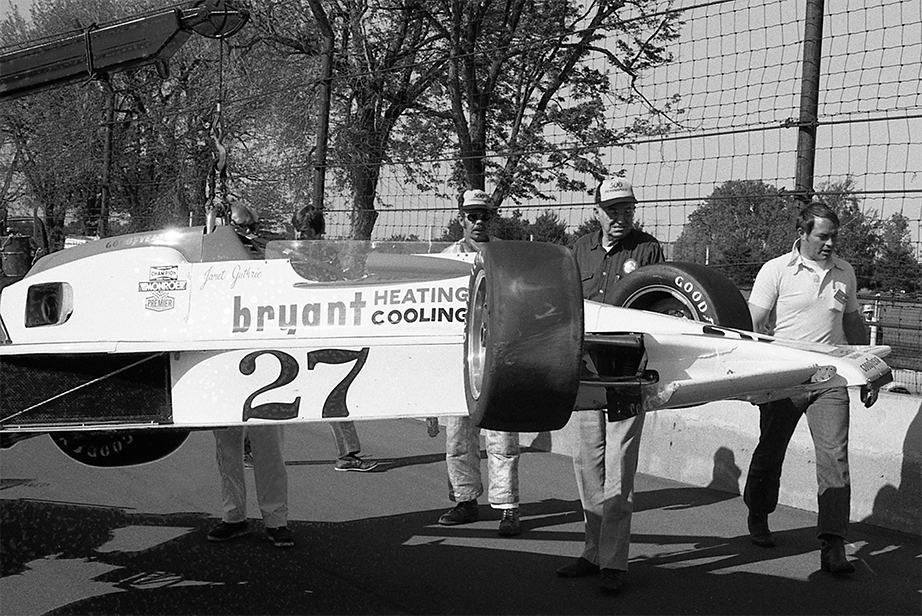

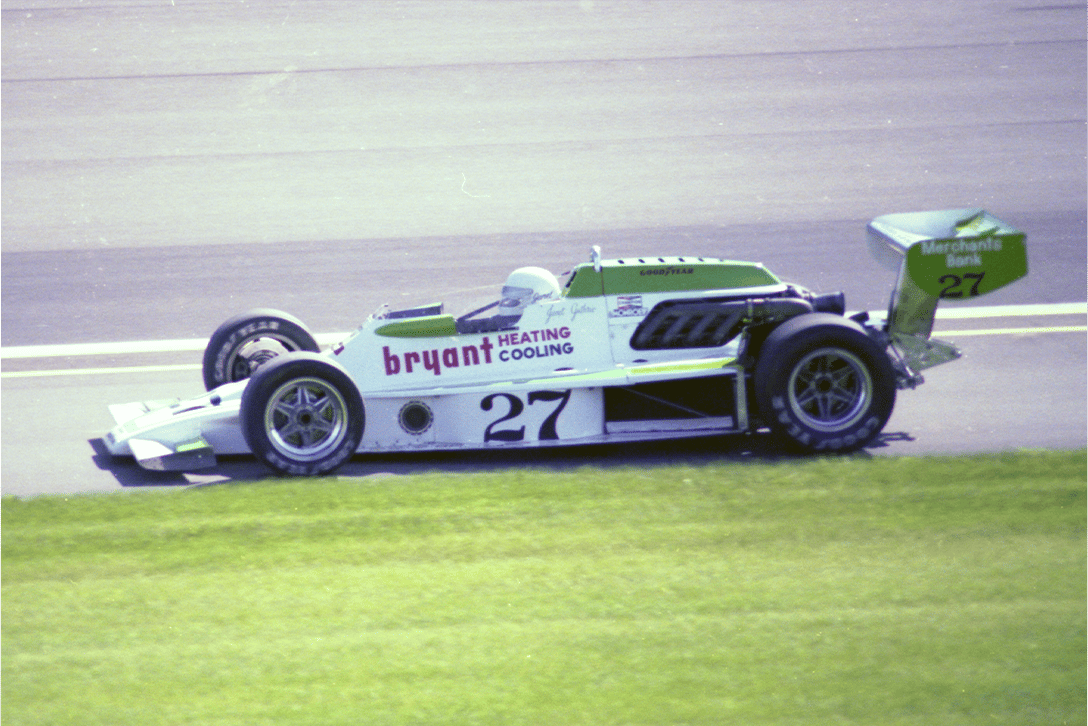

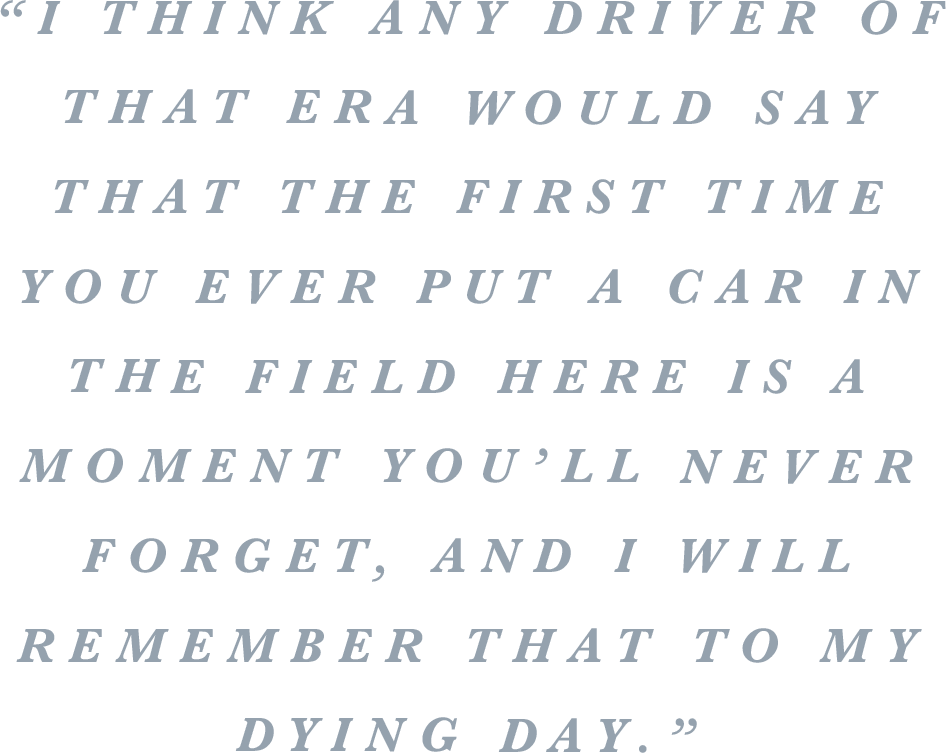
– JANET GUTHRIE

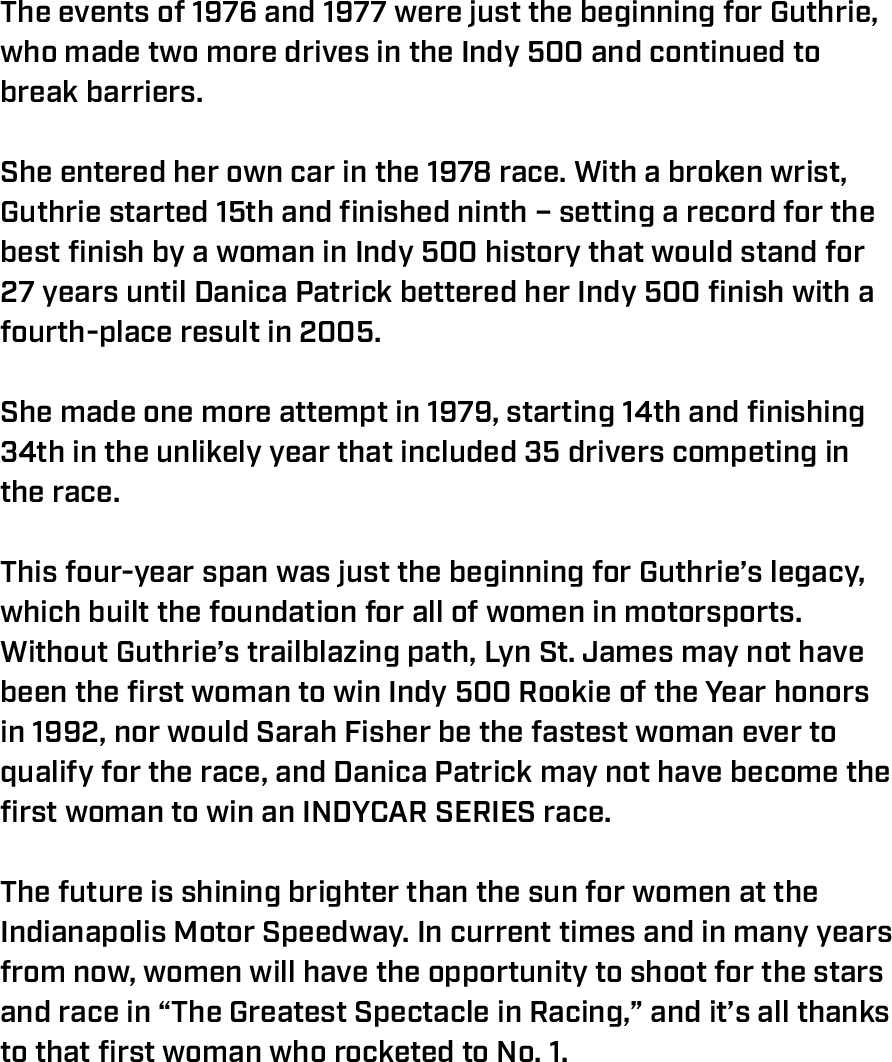
The events of 1976 and 1977 were just the beginning for Guthrie, who made two more drives in the Indy 500 and continued to break barriers.
She entered her own car in the 1978 race. With a broken wrist, Guthrie started 15th and finished ninth – setting a record for the best finish by a woman in Indy 500 history that would stand for 27 years until Danica Patrick bettered her Indy 500 finish with a fourth-place result in 2005.
She made one more attempt in 1979, starting 14th and finishing 34th in the unlikely year that included 35 drivers competing in the race.
This four-year span was just the beginning for Guthrie’s legacy, which built the foundation for all of women in motorsports. Without Guthrie’s trailblazing path, Lyn St. James may not have been the first woman to win Indy 500 Rookie of the Year honors in 1992, nor would Sarah Fisher be the fastest woman ever to qualify for the race, and Danica Patrick may not have become the first woman to win an INDYCAR SERIES race.
The future is shining brighter than the sun for women at the Indianapolis Motor Speedway. In current times and in many years from now, women will have the opportunity to shoot for the stars and race in “The Greatest Spectacle in Racing,” and it’s all thanks to that first woman who rocketed to No. 1.

– JANET GUTHRIE






JANET GUTHRIE–45 YEARS


WHERE TRADITION NEVER STOPS





As the saying goes, “Shoot for the moon. Even if you miss, you’ll land among the stars.” Janet Guthrie shot for the moon at the Indianapolis Motor Speedway in the 1970s, and instead of landing among the stars, she became one as she pioneered a path for women in motorsports by becoming the first female to race in the Indianapolis 500.
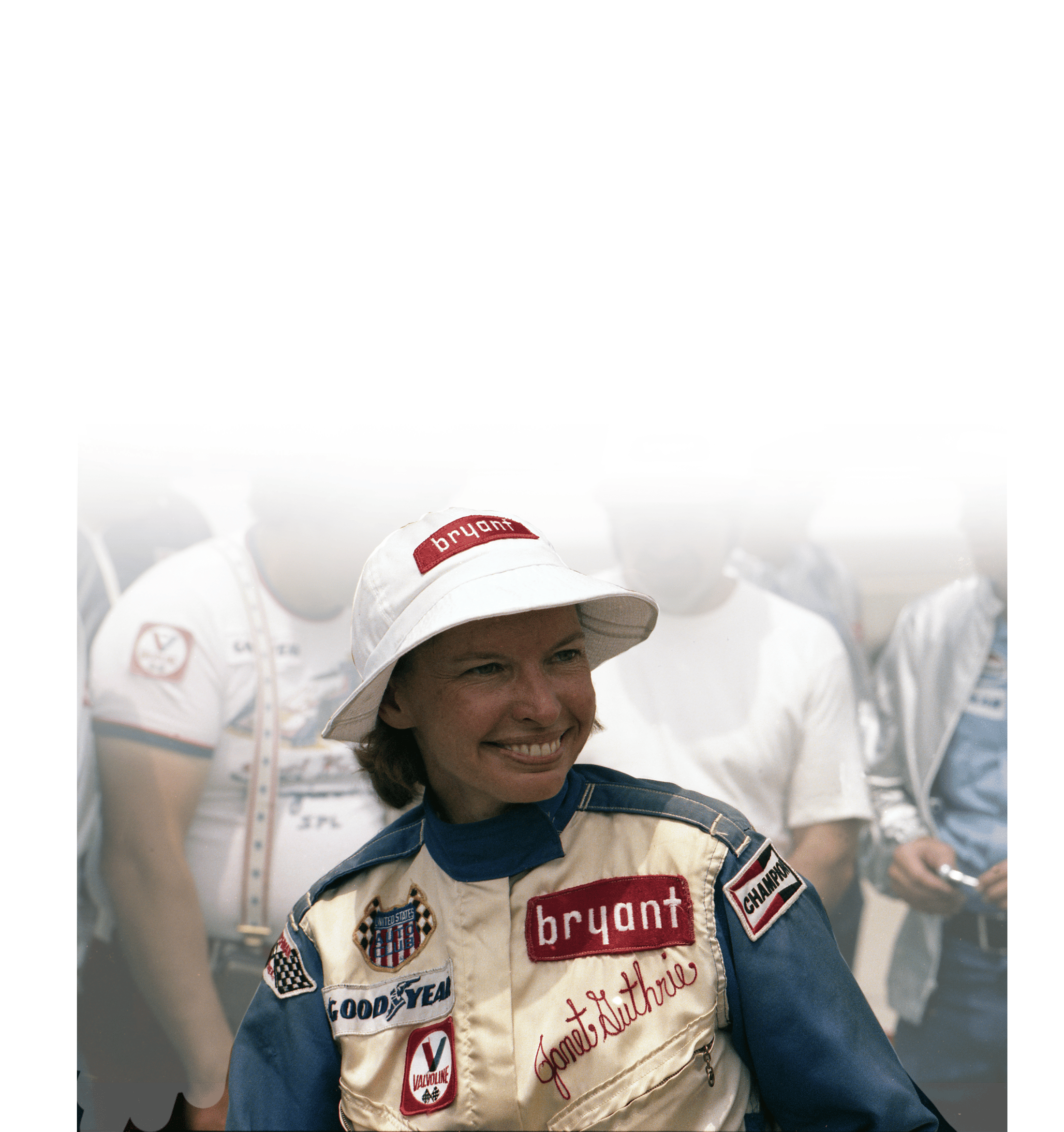
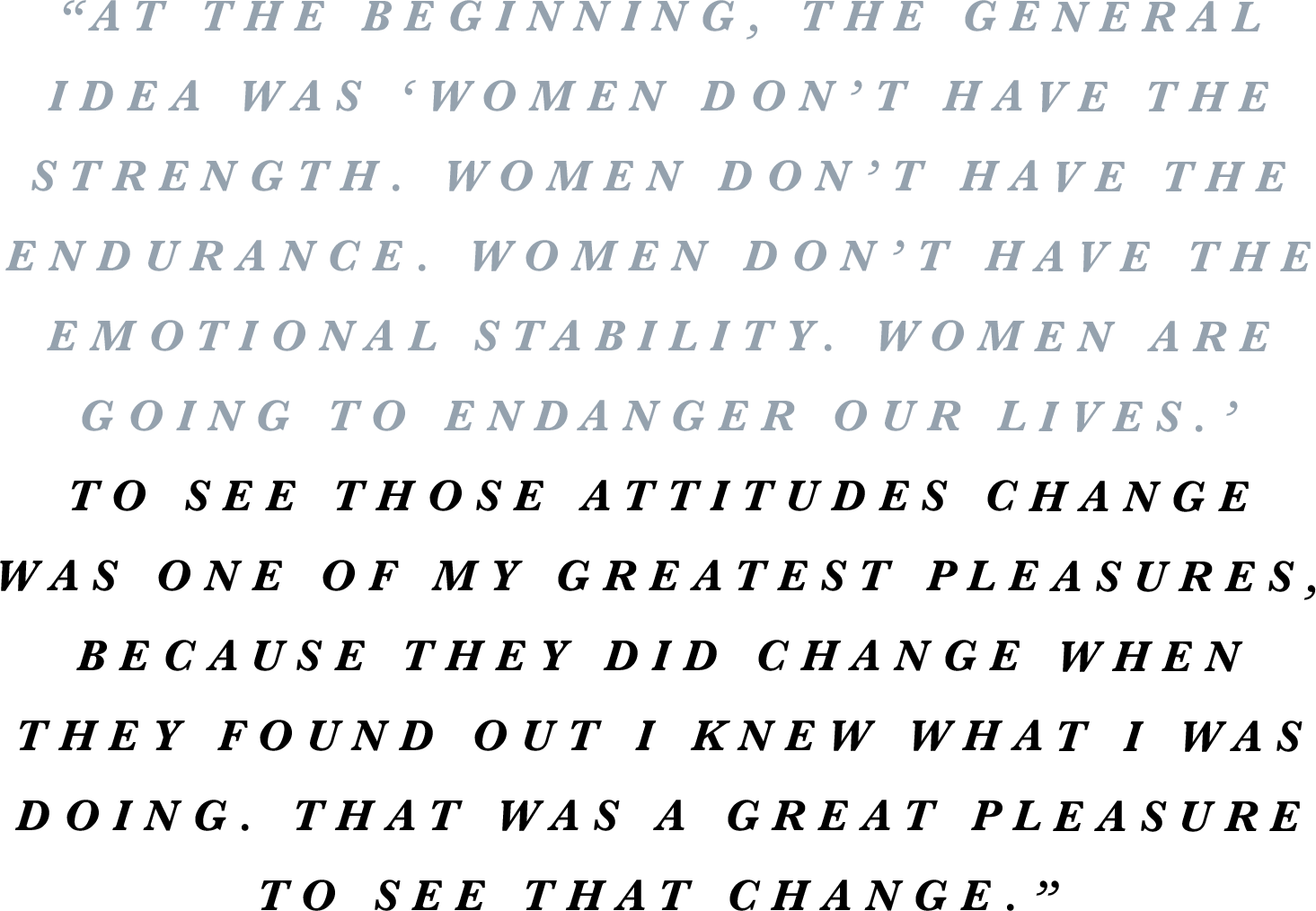
–JANET GUTHRIE


In 1960, Guthrie got her physics degree from the University of Michigan and started working as an aerospace engineer. She even applied to be a NASA astronaut in 1964. Unfortunately for Guthrie but fortunately for the motorsports industry, outer space was not in the cards for this racing pioneer.
Guthrie’s introduction to auto racing happened because the clogged airspace of New York City didn’t allow her to purchase an old World War II airplane in which to perform aerobatic tricks. Instead, she purchased a Jaguar XK120, and the rest is history.
Guthrie started competing in the Sports Car Club of America (SCCA), which turned into class victories at the 12 Hours of Sebring and her becoming the first woman to start a NASCAR race. As the 1970s rolled around, Guthrie was turning heads, in particular the head of USAC and Indy 500 car owner Rolla Vollstedt.

Vollstedt brought Guthrie to Indianapolis 45 years ago this May, making history as the first woman to enter the Indianapolis 500. This feat in 1976 came just five years after women were granted access to Gasoline Alley and pit lane in 1971.
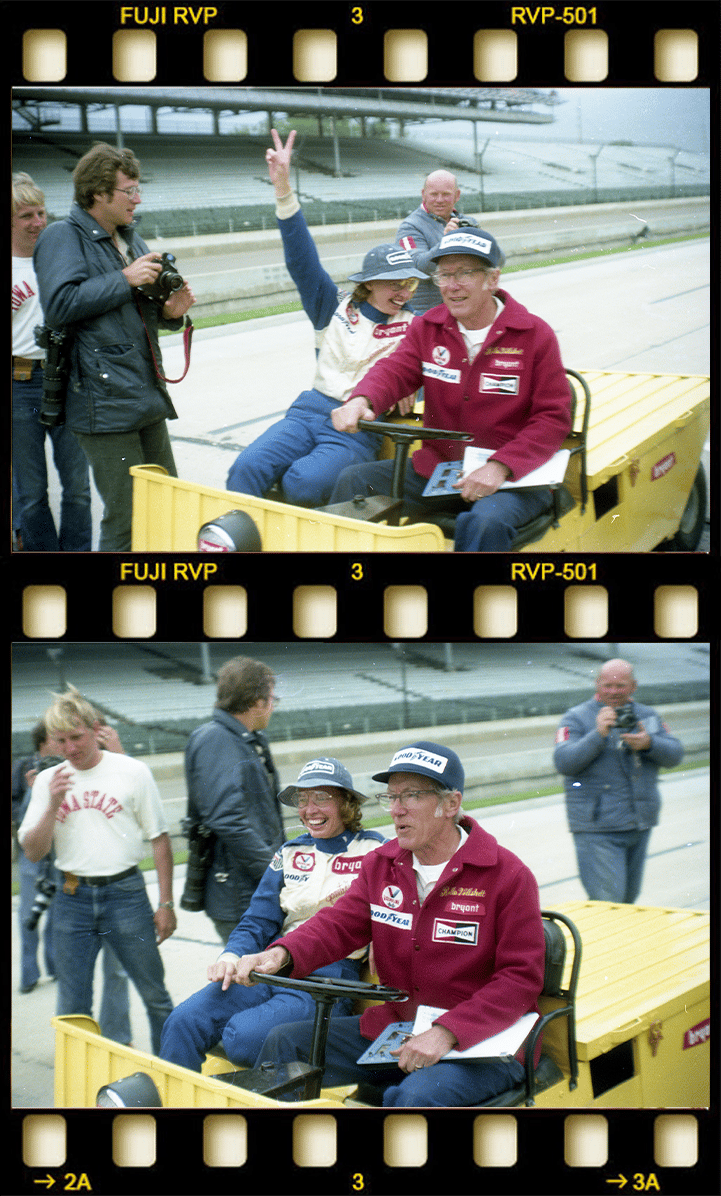
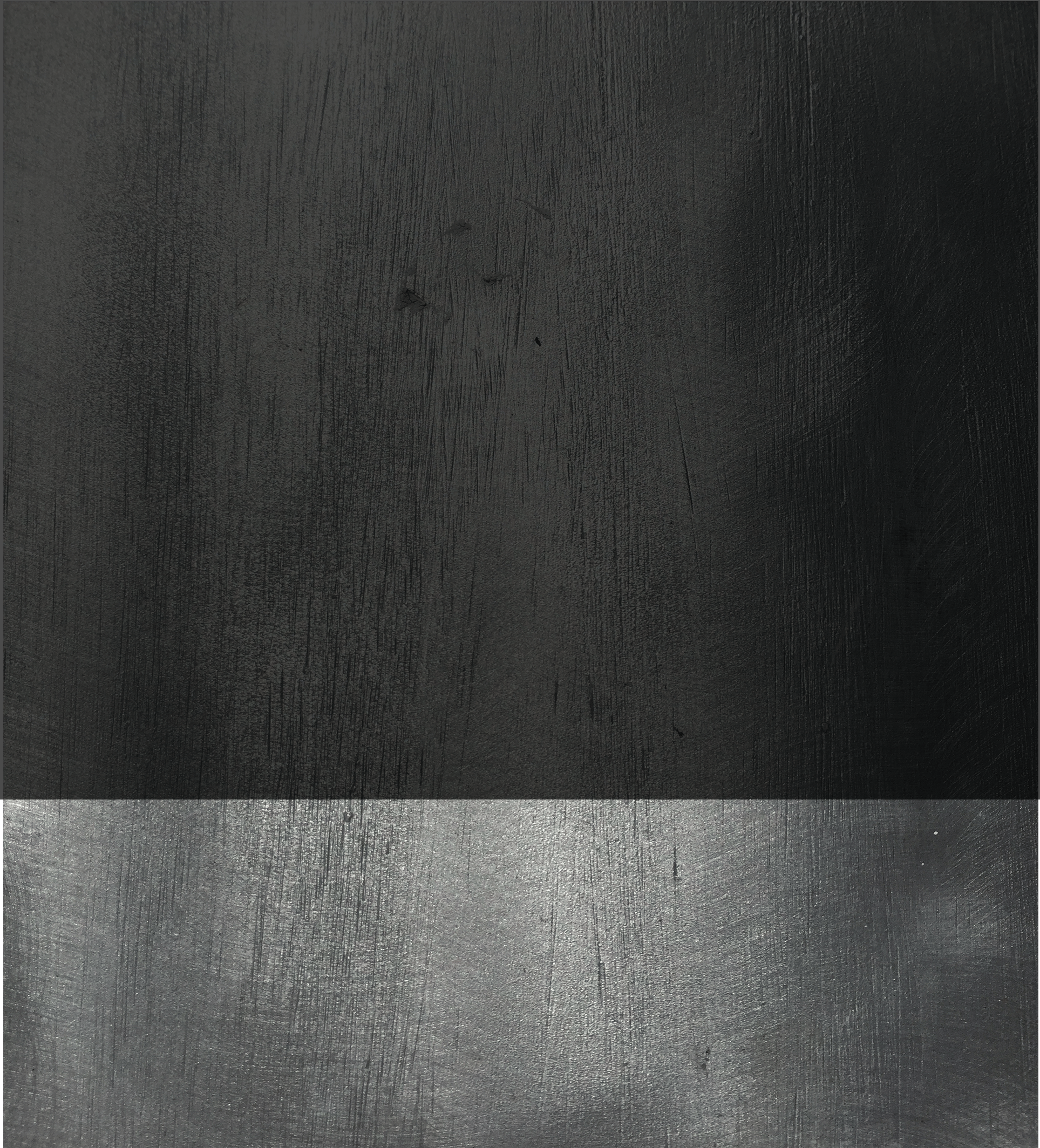
–JANET GUTHRIE
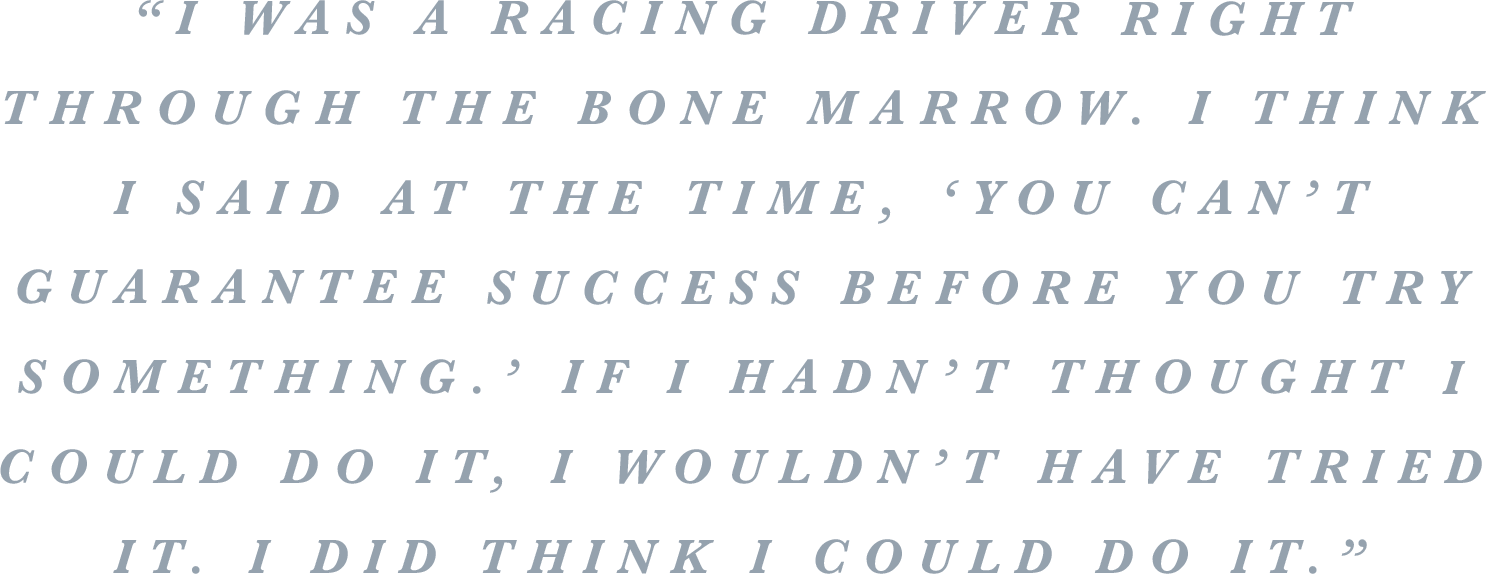

Unfortunately, she got off to a rocky start. Mechanical issues plagued her first few days at the Racing Capital of the World, and Guthrie didn’t see track time until Friday, May 10 when she became the first woman ever to drive official laps around the legendary Speedway in Vollstedt’s No. 27 Bryant Heating & Cooling machine.





However, mechanical issues continued to plague the team, and the speed wasn’t there. Eventually, it became clear that her car did not have a path to make the race. Vollstedt was determined not to let Guthrie’s first attempt at Indianapolis result in nothing, so he began looking for another team that would put Guthrie in their car.
Vollstedt, a renowned car owner himself, landed on another well-known owner and already legendary driver at the Speedway: A.J. Foyt.
Foyt, who was a year away from becoming the first driver to win the Indianapolis 500 for a fourth time, offered his backup car to Guthrie to make laps in during the morning practice session on the final day of qualifications on May 23.
In a “go big or go home” moment that would prove whether Guthrie could hang with the best while driving the best, she turned her fastest laps of the month in the No. 1 Gilmore/Coyote, rocketing to second on the day’s speed chart.
Guthrie proved that in the right car she was qualified. While that was all she wrote in 1976, her history book was just beginning.
–JaNET GUTHRIE

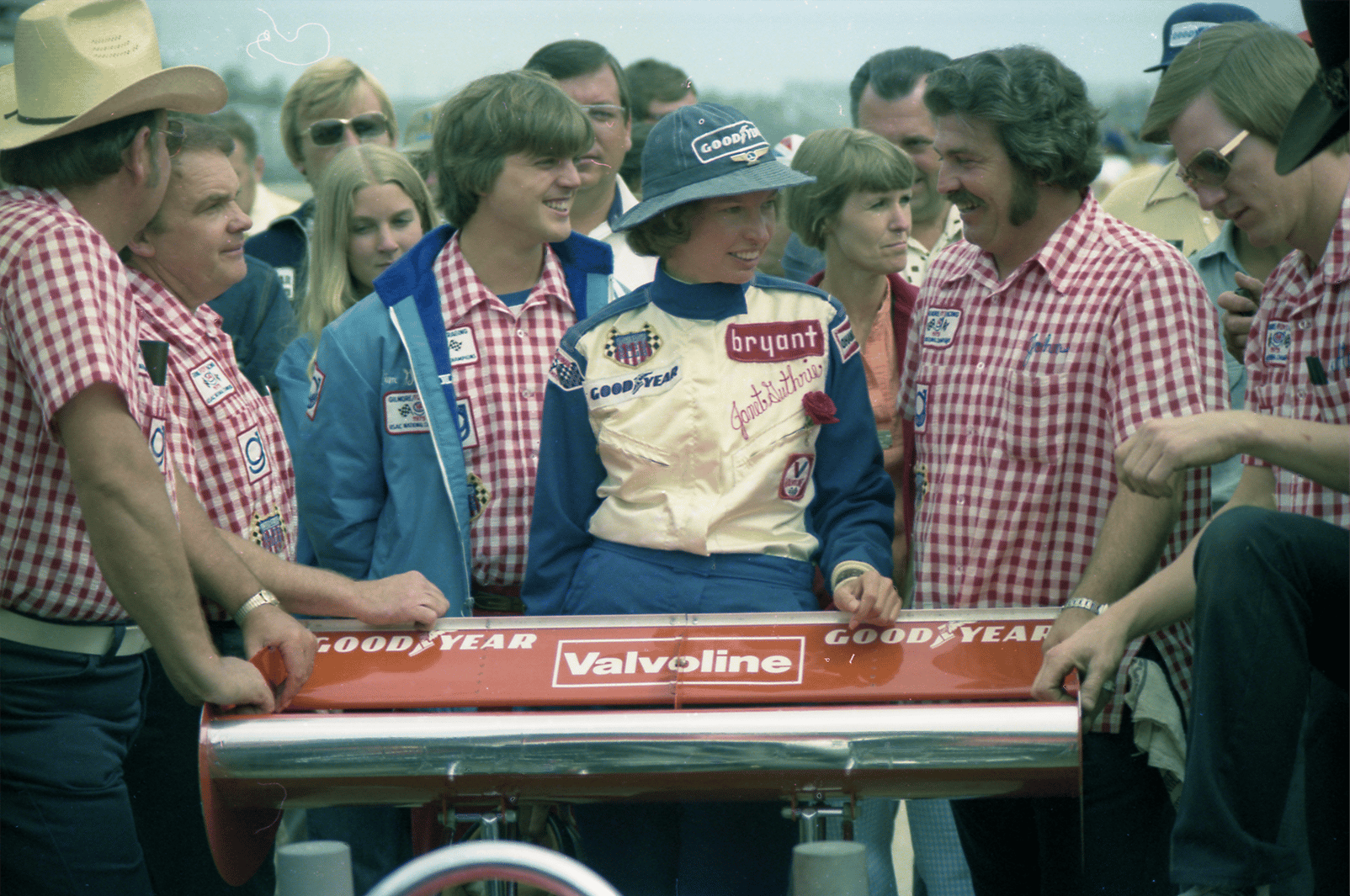
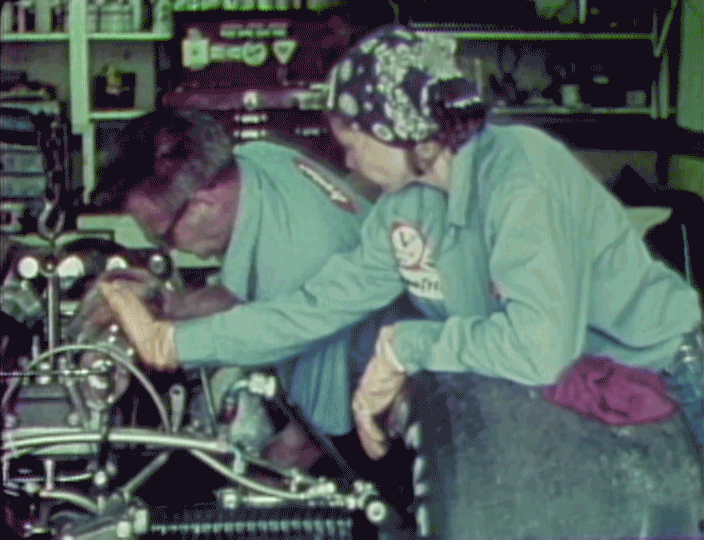
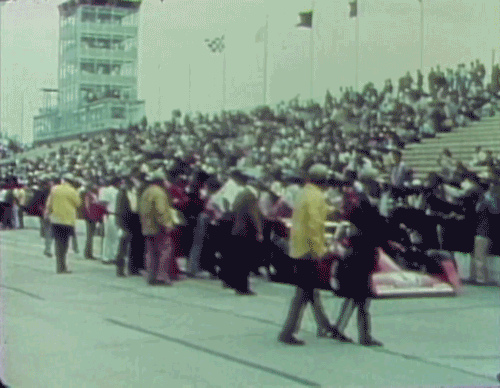

–JaNET GUTHRIE
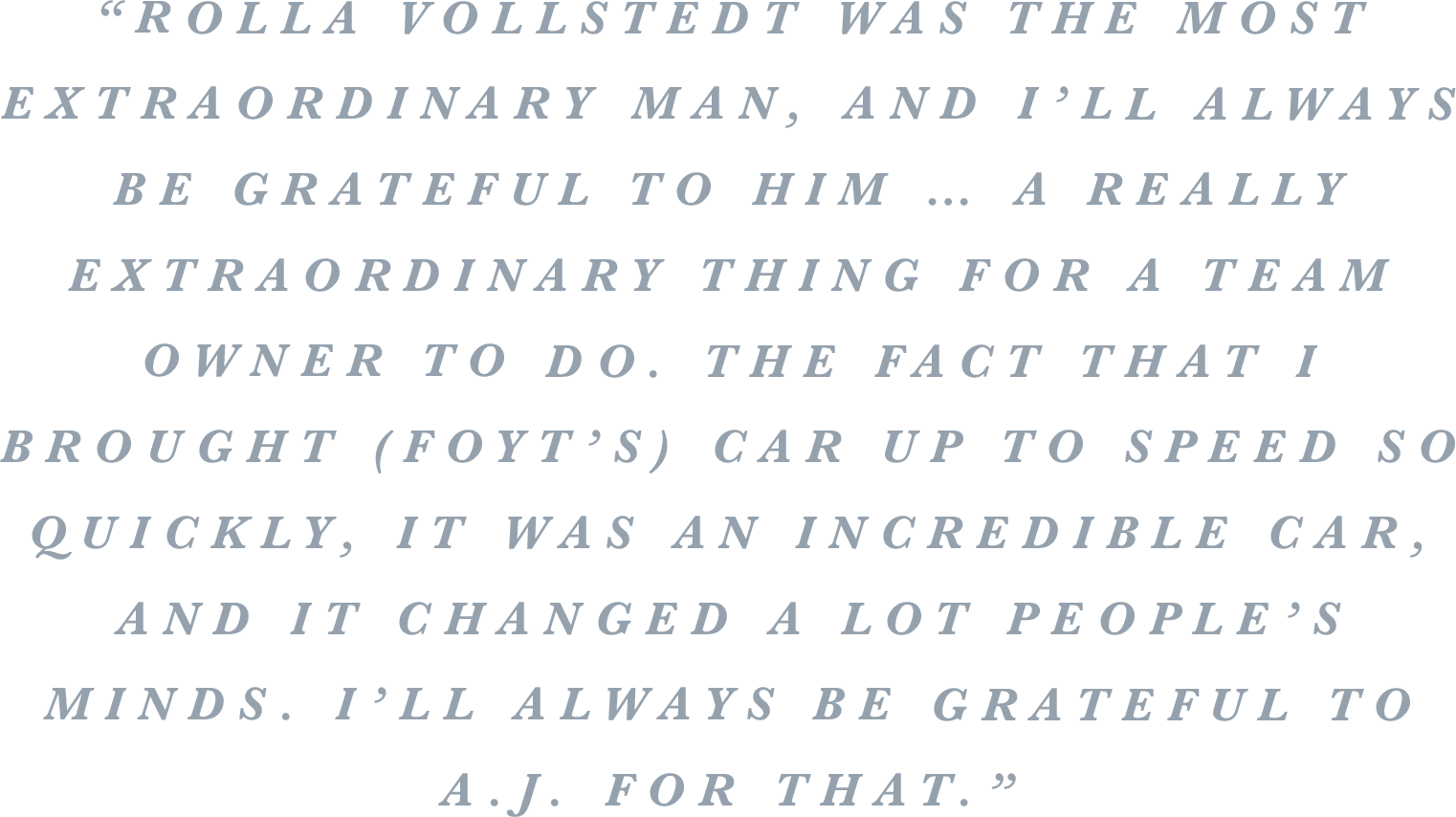

Guthrie returned to Indianapolis with Vollstedt in 1977, and she immediately splashed onto the scene in a big way.
Guthrie, now 39, rocketed to the top of the Scoring Pylon on the opening day of Indy 500 practice on May 7 with a top speed of 185.607 mph. She was 3 mph faster than the second-fastest speed of the day set by Danny Ongais.
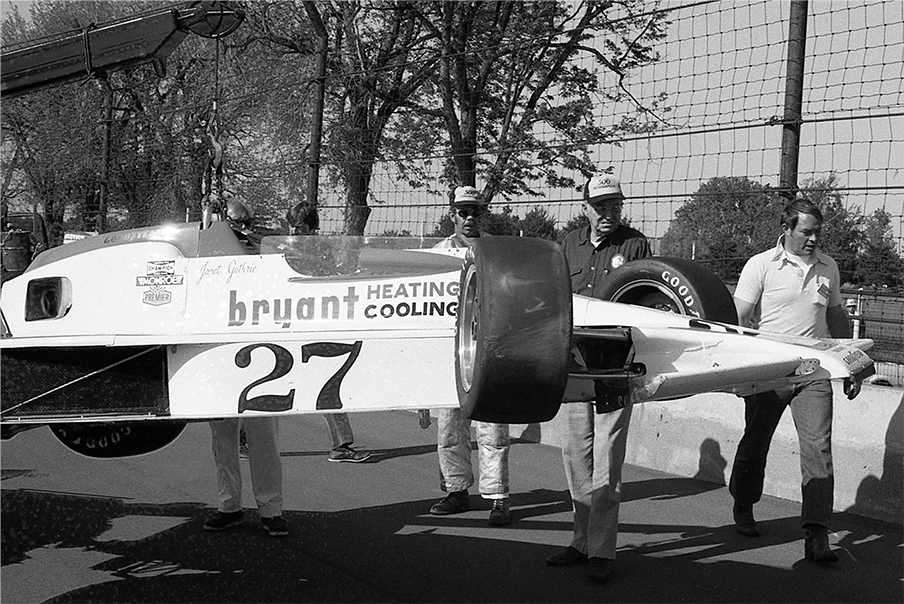



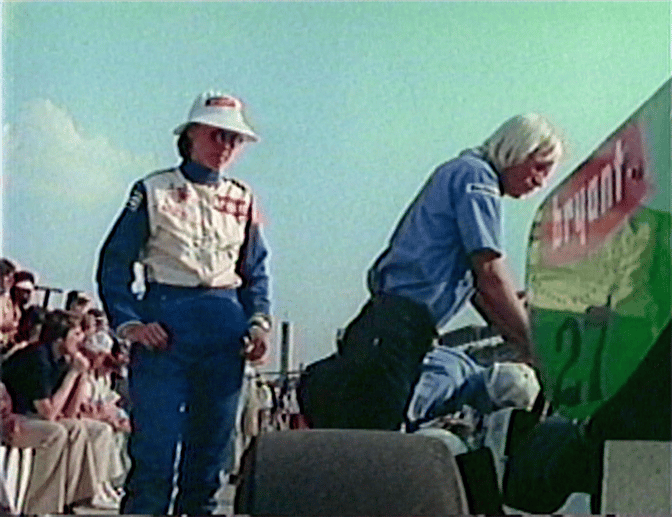
Nevertheless, Guthrie powered forward, determined not to let Indianapolis’ daunting walls scare her away. Guthrie missed the first weekend of qualifying because of the accident, but she and the team repaired the car in time for another round of qualifications the following weekend.
On the last day of qualifying, Guthrie was the first driver to make an attempt, at 12:03 p.m. With an average speed of 188.403 mph, she became the first woman to qualify for the Indianapolis 500, slotting in the 26th position. Her speed was the 18th-fastest qualifying speed overall and the fastest of the entire final weekend.

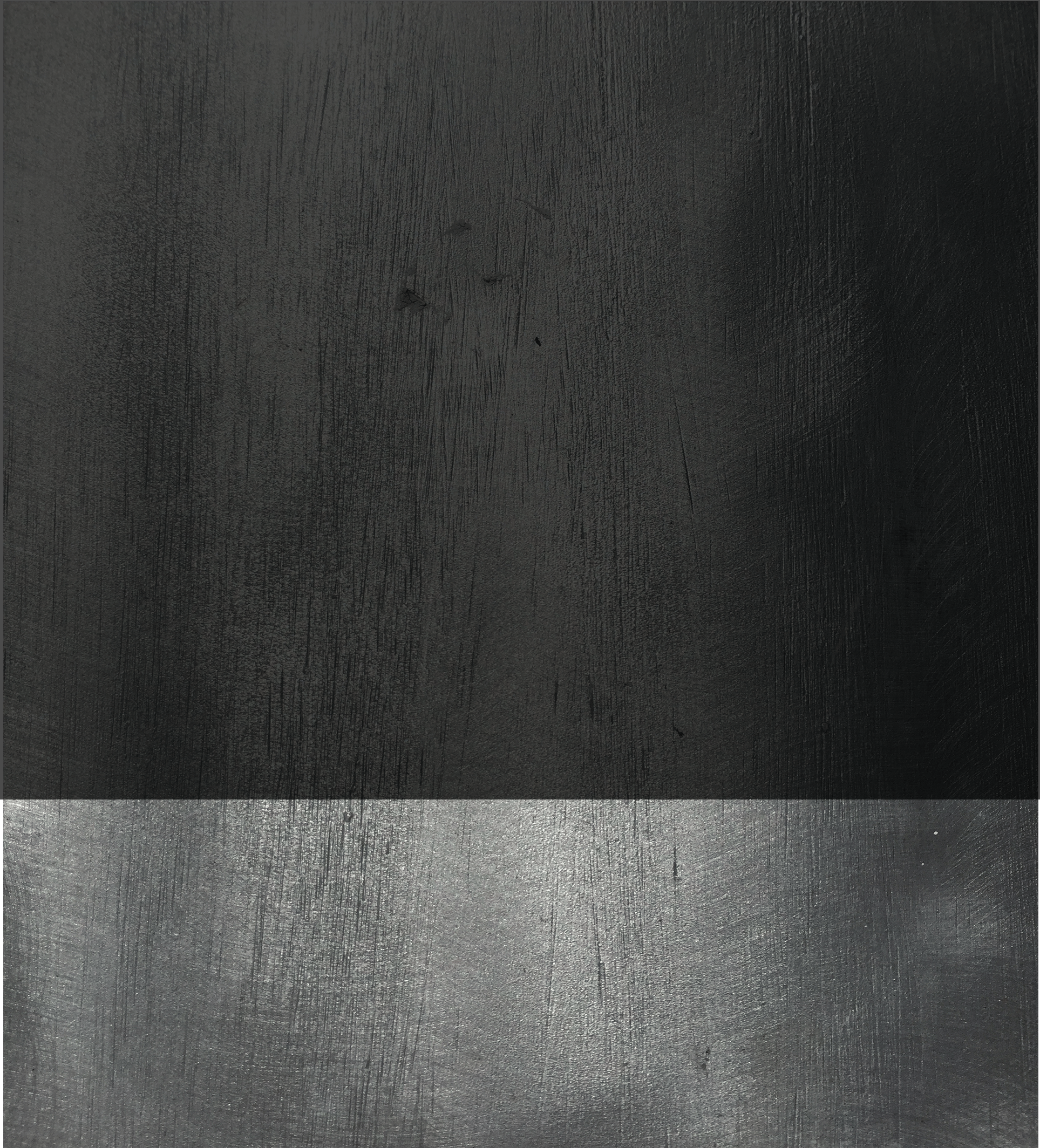
–JaNET GUTHRIE

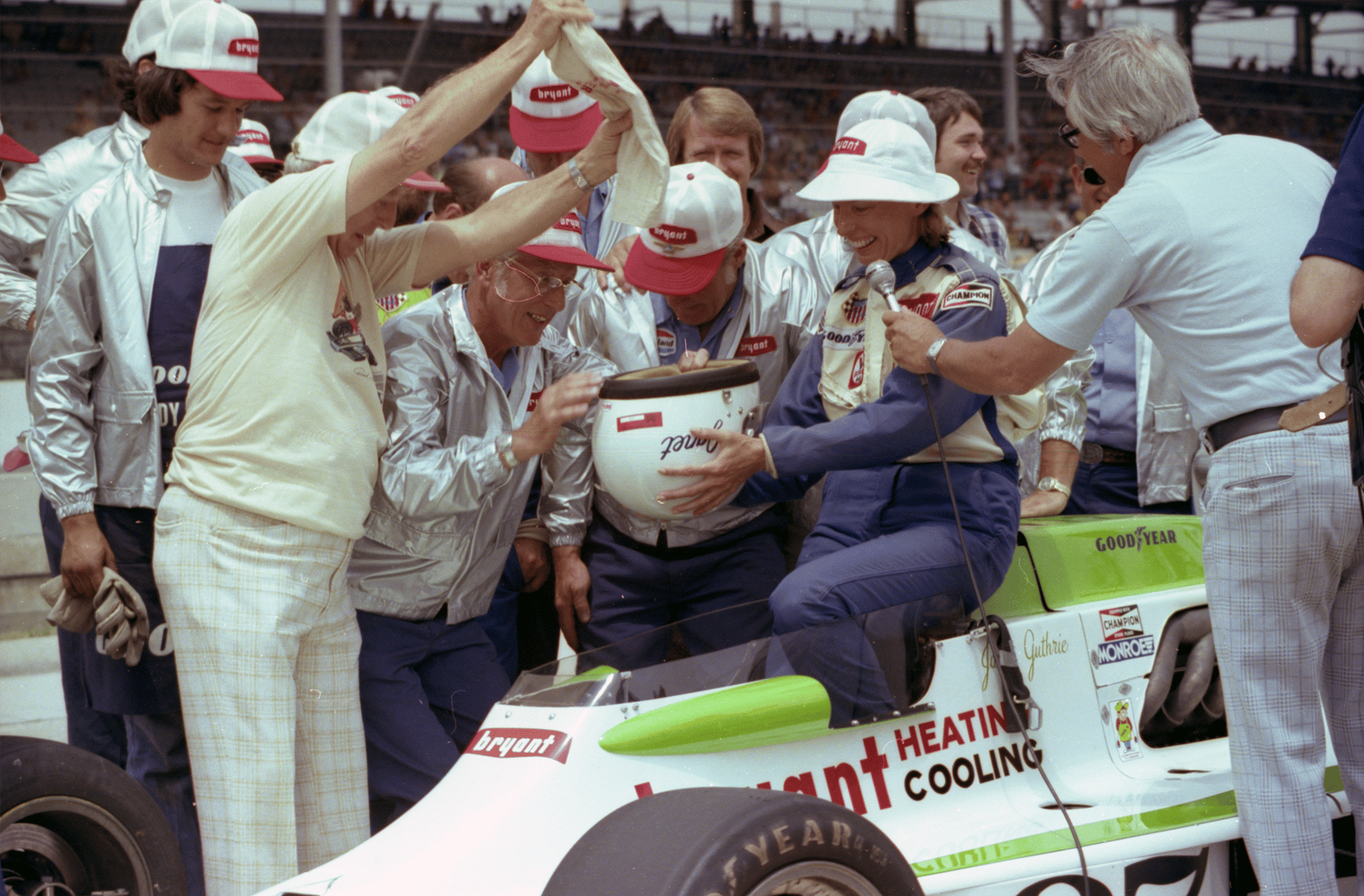
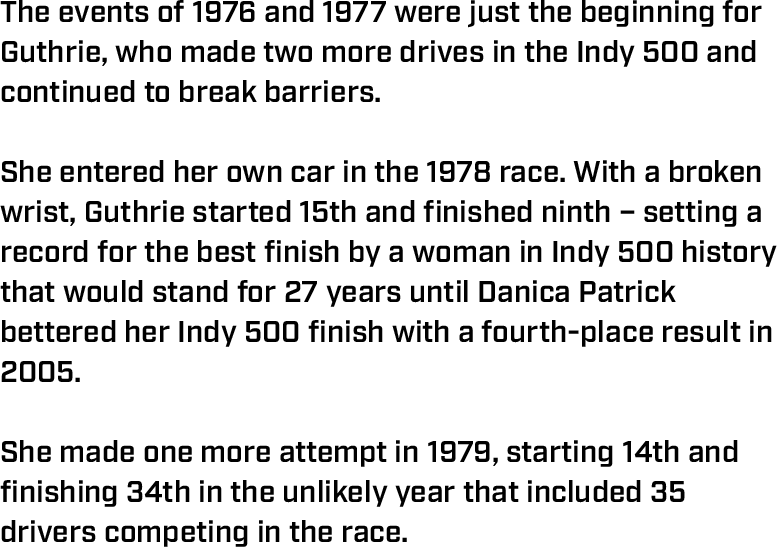
The events of 1976 and 1977 were just the beginning for Guthrie, who made two more drives in the Indy 500 and continued to break barriers.
She entered her own car in the 1978 race. With a broken wrist, Guthrie started 15th and finished ninth – setting a record for the best finish by a woman in Indy 500 history that would stand for 27 years until Danica Patrick bettered her Indy 500 finish with a fourth-place result
in 2005.
She made one more attempt in 1979, starting 14th and finishing 34th in the unlikely year that included 35 drivers competing in the race.
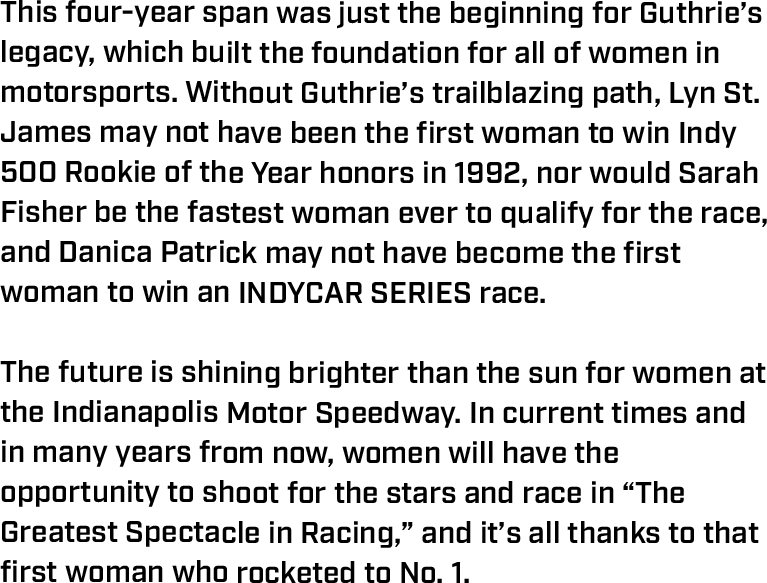
This four-year span was just the beginning for Guthrie’s legacy, which built the foundation for all of women in motorsports. Without Guthrie’s trailblazing path, Lyn St. James may not have been the first woman to win Indy 500 Rookie of the Year honors in 1992, nor would Sarah Fisher be the fastest woman ever to qualify for the race, and Danica Patrick may not have become the first woman to win an INDYCAR SERIES race.
The future is shining brighter than the sun for women at the Indianapolis Motor Speedway. In current times and in many years from now, women will have the opportunity to shoot for the stars and race in “The Greatest Spectacle in Racing,” and it’s all thanks to that first woman who rocketed to No. 1.
–JaNET GUTHRIE




The Borg-Warner Trophy is one of the most recognizable prizes in all of sports. It’s art, speed and elegance all wrapped in one that has chronicled every moment of the Indianapolis 500 that it has witnessed.

–JANET GUTHRIE


In 1960, Guthrie got her physics degree from the University of Michigan and started working as an aerospace engineer. She even applied to be a NASA astronaut in 1964. Unfortunately for Guthrie but fortunately for the motorsports industry, outer space was not in the cards for this racing pioneer.
Guthrie’s introduction to auto racing happened because the clogged airspace of New York City didn’t allow her to purchase an old World War II airplane in which to perform aerobatic tricks. Instead, she purchased a Jaguar XK120, and the rest is history.
Guthrie started competing in the Sports Car Club of America (SCCA), which turned into class victories at the 12 Hours of Sebring and her becoming the first woman to start a NASCAR race. As the 1970s rolled around, Guthrie was turning heads, in particular the head of USAC and Indy 500 car owner Rolla Vollstedt.


Vollstedt brought Guthrie to Indianapolis 45 years ago this May, making history as the first woman to enter the Indianapolis 500. This feat in 1976 came just five years after women were granted access to Gasoline Alley and pit lane in 1971.
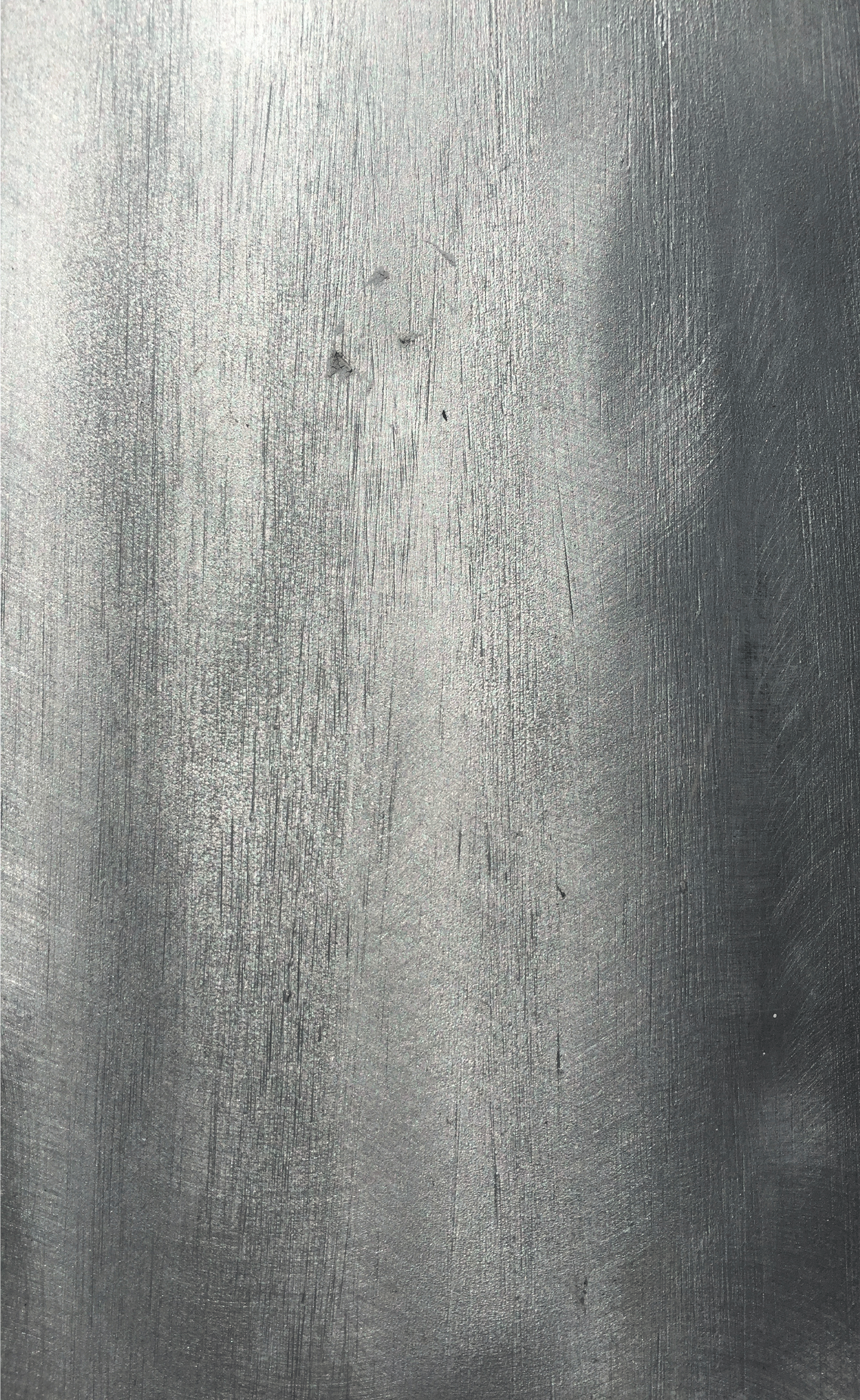
–JANET GUTHRIE


Unfortunately, she got off to a rocky start. Mechanical issues plagued her first few days at the Racing Capital of the World, and Guthrie didn’t see track time until Friday, May 10 when she became the first woman ever to drive official laps around the legendary Speedway in Vollstedt’s No. 27 Bryant Heating & Cooling machine.
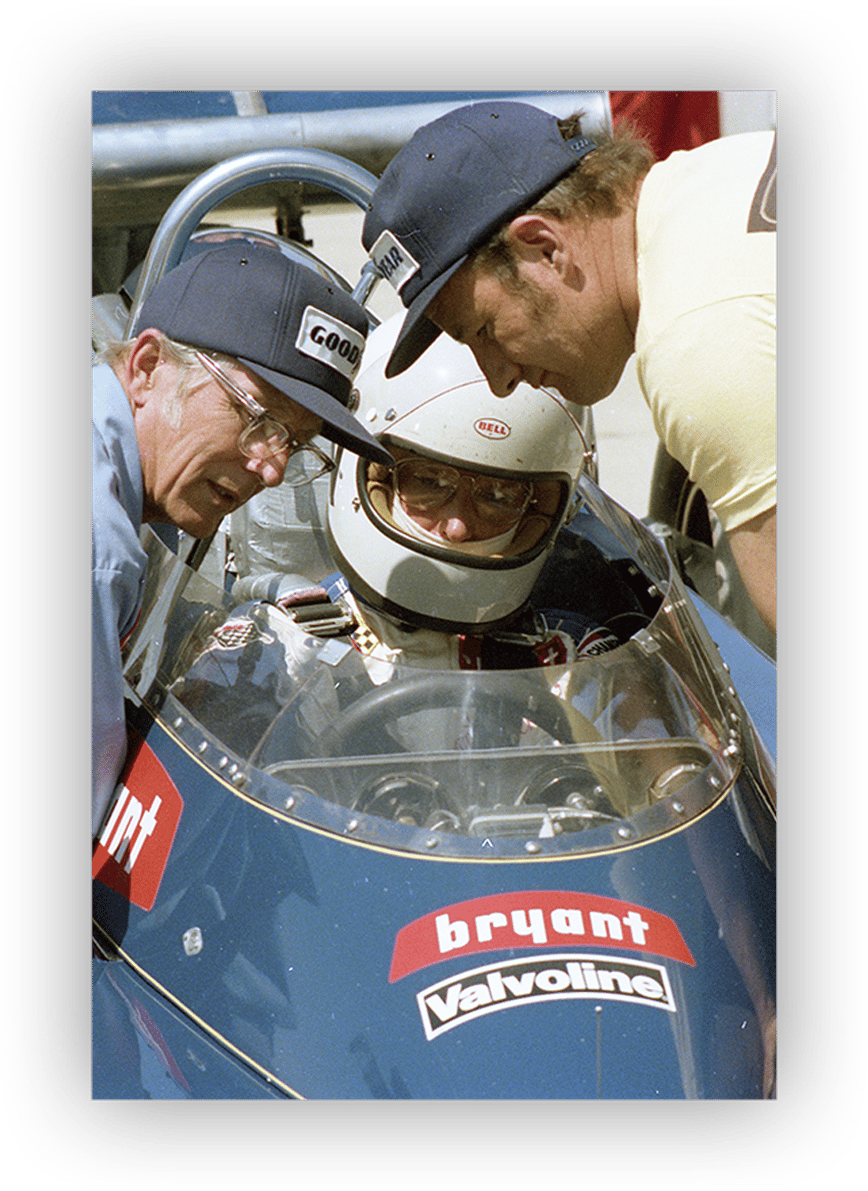

–JANET GUTHRIE

From issues firing the car up on the first day to an oil leak and a turbocharger fire, Guthrie’s car struggled to stay together all month long.
But she persisted, and she completed the first phase of the Rookie Orientation Program on May 11 and completed the second and final phase on May 17 “in an amazingly smooth and consistent run that brought instant approval from a ‘jury’ of four veteran USAC drivers,” the Indy 500 Daily Trackside Report noted.

However, mechanical issues continued to plague the team, and the speed wasn’t there. Eventually, it became clear that her car did not have a path to make the race. Vollstedt was determined not to let Guthrie’s first attempt at Indianapolis result in nothing, so he began looking for another team that would put Guthrie in their car.
Vollstedt, a renowned car owner himself, landed on another well-known owner and already legendary driver at the Speedway: A.J. Foyt.



Foyt, who was a year away from becoming the first driver to win the Indianapolis 500 for a fourth time, offered his backup car to Guthrie to make laps in during the morning practice session on the final day of qualifications on May 23.
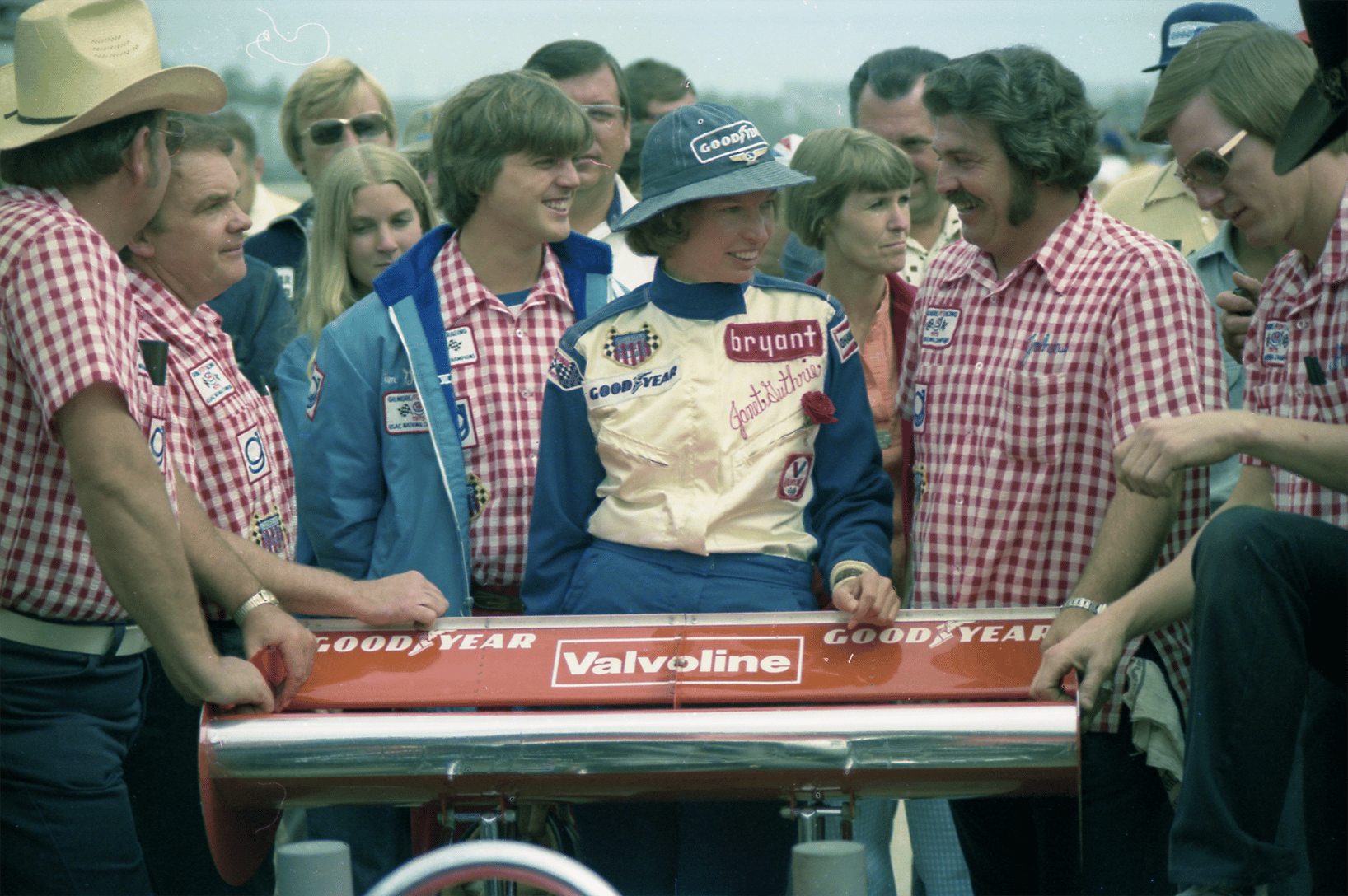
In a “go big or go home” moment that would prove whether Guthrie could hang with the best while driving the best, she turned her fastest laps of the month in the No. 1 Gilmore/Coyote, rocketing to second on the day’s speed chart.
Guthrie proved that in the right car she was qualified. While that was all she wrote in 1976, her history book was just beginning.
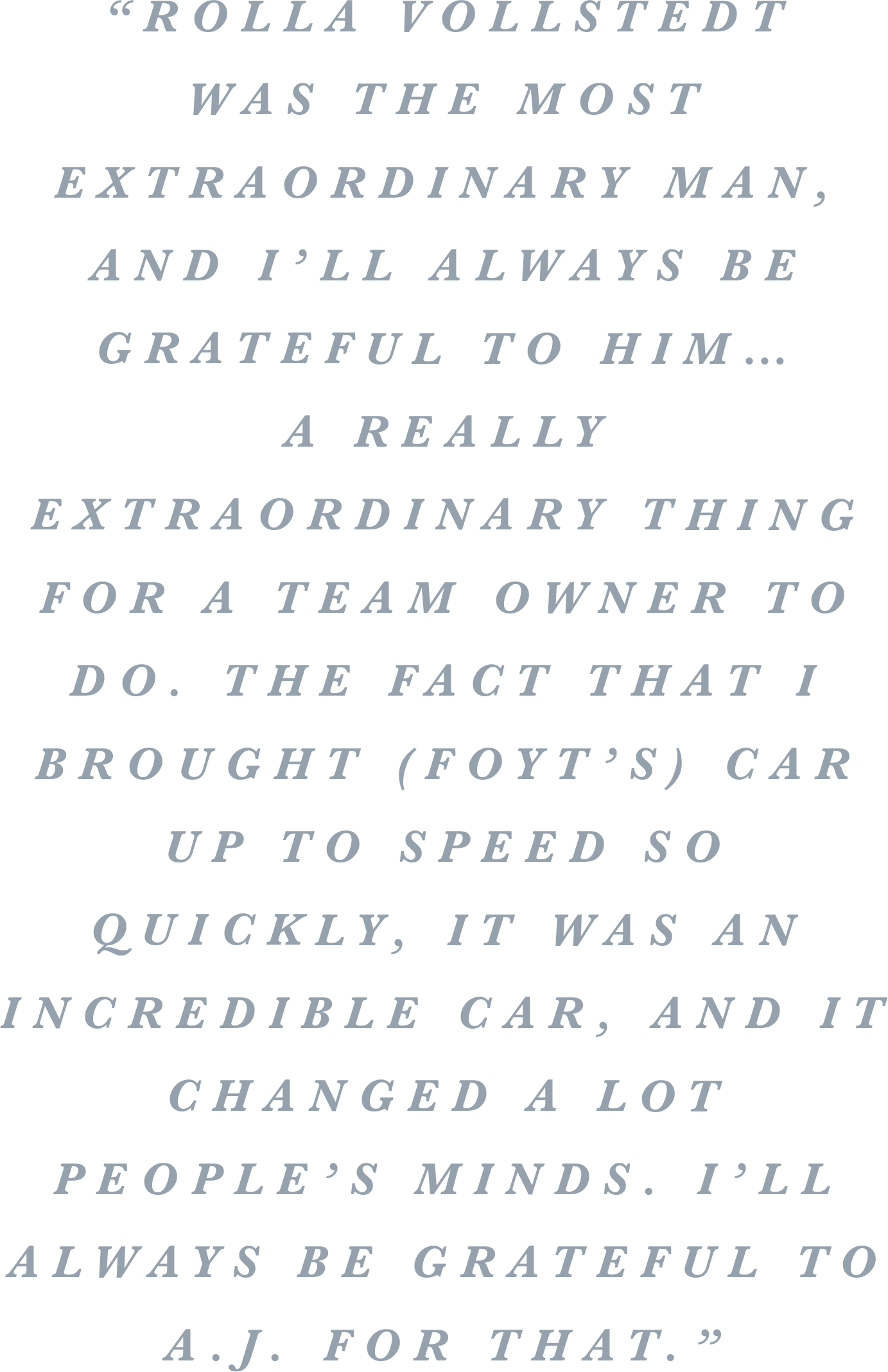
–JANET GUTHRIE

Guthrie returned to Indianapolis with Vollstedt in 1977, and she immediately splashed onto the scene in a big way.
Nevertheless, Guthrie powered forward, determined not to let Indianapolis’ daunting walls scare her away. Guthrie missed the first weekend of qualifying because of the accident, but she and the team repaired the car in time for another round of qualifications the following weekend.
On the last day of qualifying, Guthrie was the first driver to make an attempt, at 12:03 p.m. With an average speed of 188.403 mph, she became the first woman to qualify for the Indianapolis 500, slotting in the 26th position. Her speed was the 18th-fastest qualifying speed overall and the fastest of the entire final weekend.

Guthrie, now 39, rocketed to the top of the Scoring Pylon on the opening day of Indy 500 practice on May 7 with a top speed of 185.607 mph. She was 3 mph faster than the second-fastest speed of the day set by Danny Ongais.

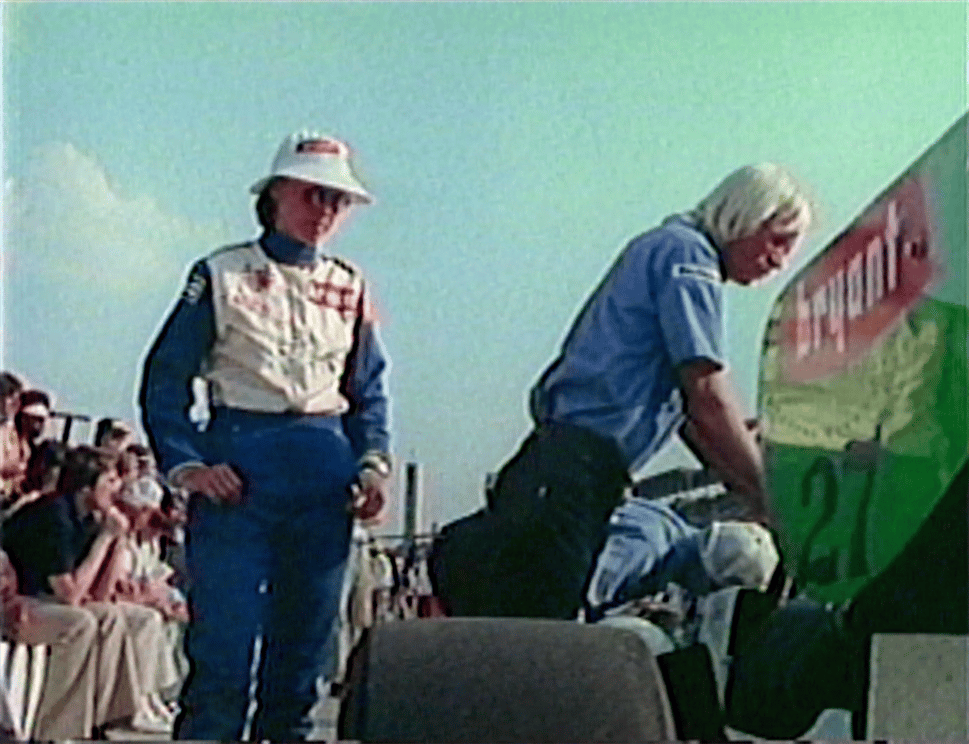



The next weekend, Guthrie made her Race Day debut, but
engine issues after just 27 laps prevented what many expected to be a promising day. Still, Guthrie outperformed her teammate, Dick Simon and even the defending winner Johnny Rutherford.

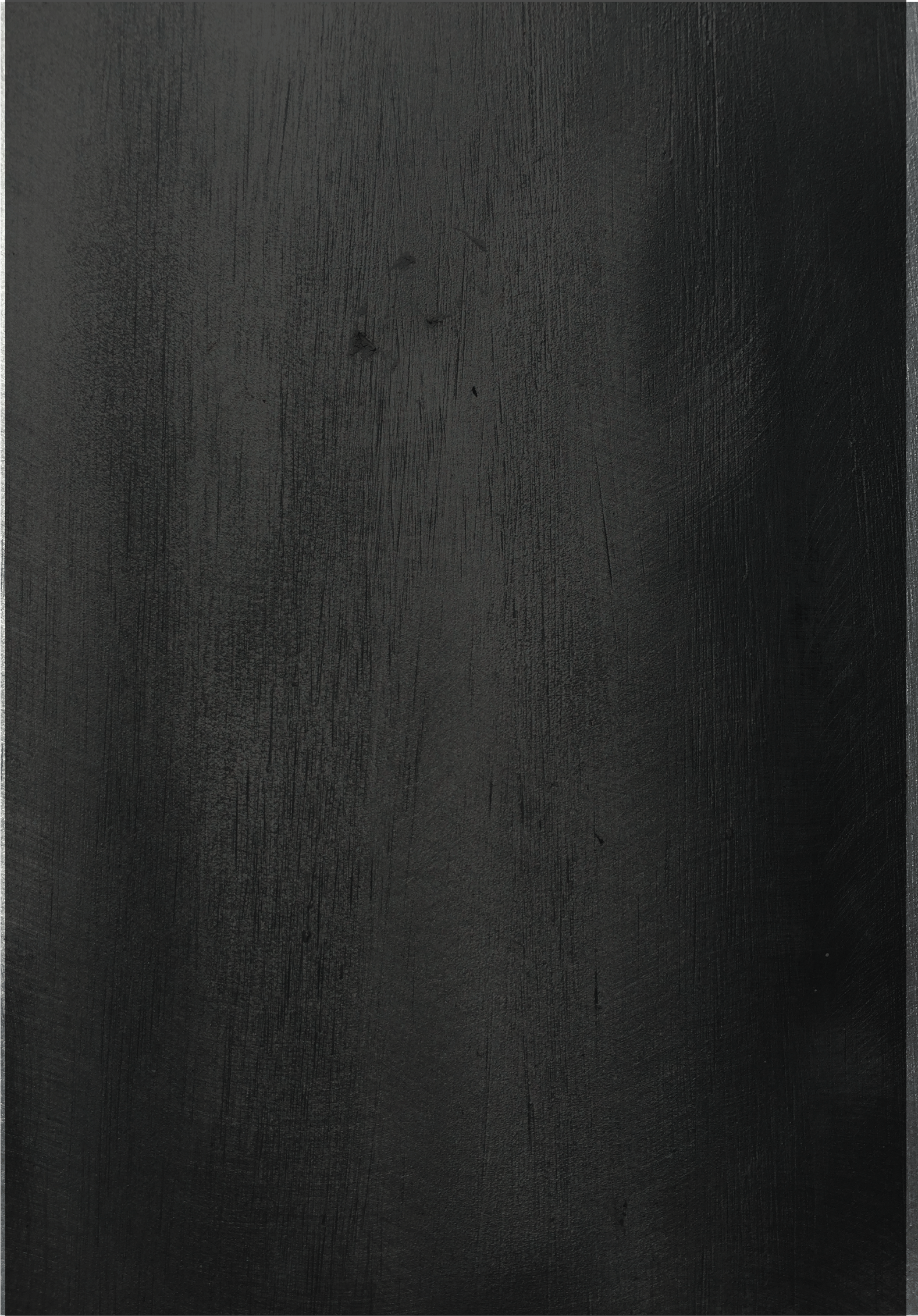
–JANET GUTHRIE


The events of 1976 and 1977 were just the beginning for Guthrie,
who made two more drives in the Indy 500 and continued to
break barriers.
She entered her own car in the 1978 race. With a broken wrist, Guthrie started 15th and finished ninth – setting a record for the best finish by a woman in Indy 500 history that would stand for 27 years until Danica Patrick bettered her Indy 500 finish with a fourth-place result in 2005.
She made one more attempt in 1979, starting 14th and finishing 34th in the unlikely year that included 35 drivers competing in the race.
This four-year span was just the beginning for Guthrie’s legacy, which built the foundation for all of women in motorsports. Without Guthrie’s trailblazing path, Lyn St. James may not have been the first woman to win Indy 500 Rookie of the Year honors in 1992, nor would Sarah Fisher be the fastest woman ever to qualify for the race, and Danica Patrick may not have become the first woman to win an INDYCAR SERIES race.
The future is shining brighter than the sun for women at the Indianapolis Motor Speedway. In current times and in many years from now, women will have the opportunity to shoot for the stars and race in “The Greatest Spectacle in Racing,” and it’s all thanks to that first woman who rocketed to No. 1.

–JANET GUTHRIE


WHERE TRADITION NEVER STOPS

WILLY T. RIBBS–30 YEARS



